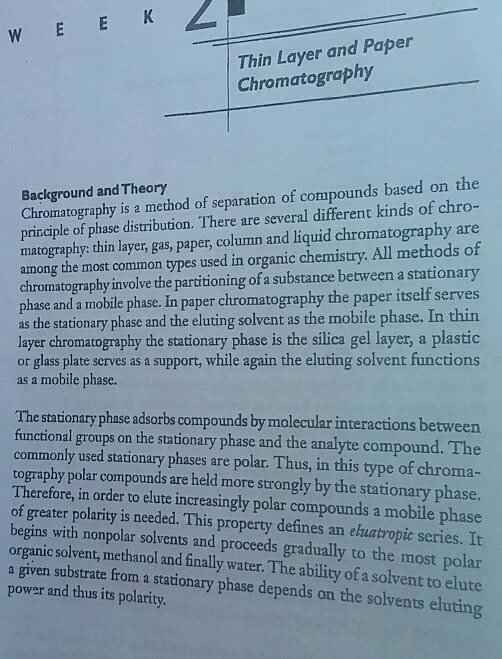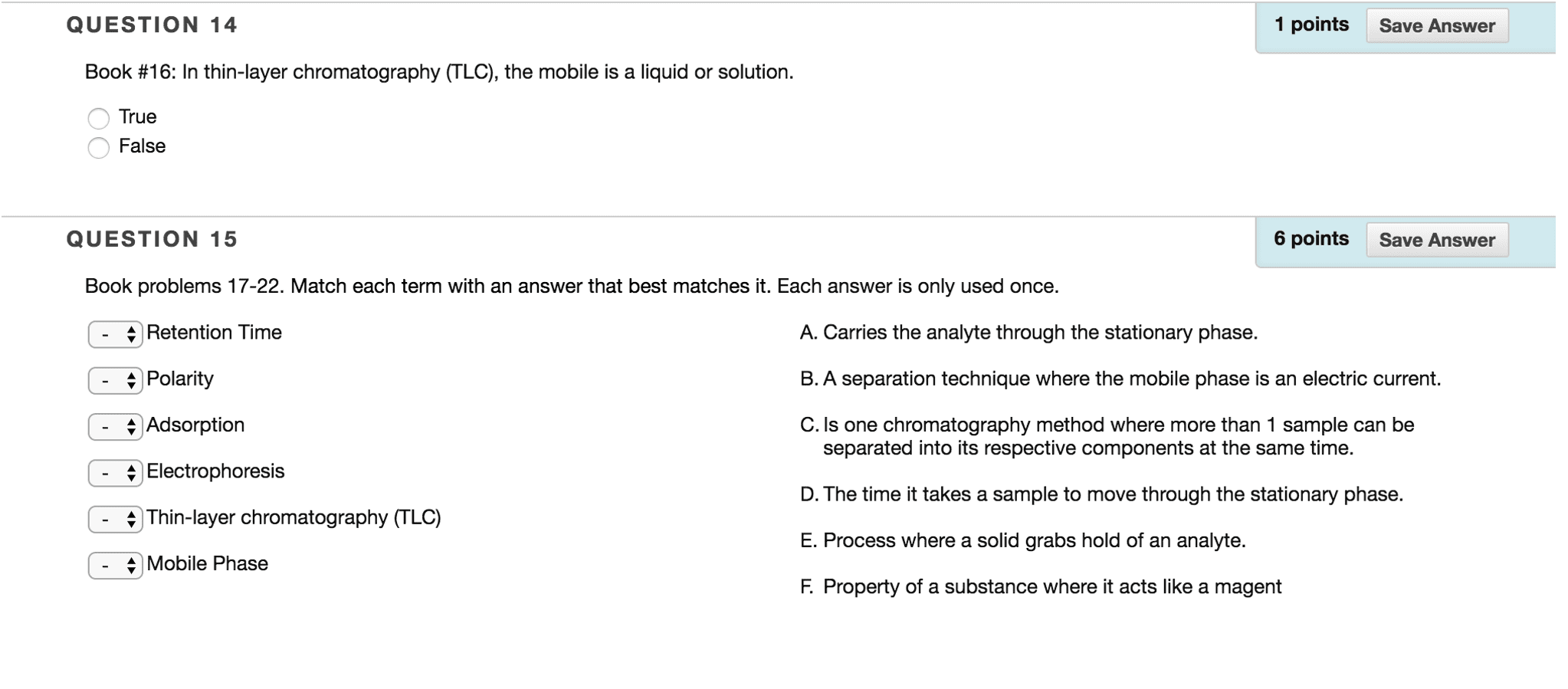CHE 211 Study Guide - Midterm Guide: Gas Chromatography, Column Chromatography, Elution

Organic Chemistry 2 – Chemical Purification & Separation
Theory of Chromatography
Chromatography is a separation technique that exploits the differences in partitioning
behaviour between a mobile phase and a stationary phase to separate the components
of a mixture
o All the chromatography that will be discuss depends on the distribution of the
substance being separated between the two phases of the chromatographic
system: the mobile phase and stationary phase
o Mobile phase: consists of a liquid or gas and carries the sample through the
stationary phase
o Stationary phase: this is usually a liquid or solid
Three types of chromatography are commonly used by organic chemists are:
1) Column chromatography
2) Thin Layer chromatography
3) Gas chromatography
► The components of a mixture separate because of the differences in their affinities for
the stationary phase and their solubilities in the mobile phase
► The mixture that needs to be separated in placed on the stationary phase and is carried
through the system by the mobile phase
► ***The competition between the stationary phase and the mobile phase pulling at the
components is what drives the separation that occurs in all different types of
chromatography***
The different components of the mixture moving through the adsorbent at different
rates is because of: physical differences and different interactions
▪ Physical differences: this includes size and vapor pressure
▪ Different interactions include adsorptivities and solubilities
The compound being separated moves slowly along the stationary phase in the
direction of the mobile phase
The individual components of the mixture become separated from one or another as
they pass through the adsorbent; they are either collected or detected depending on
the type of chromatographic technique used and the amount of sample used
► Gas-liquid chromatography is used in criminology laboratories for blood-alcohol tests
► Thin layer and gas-liquid chromatography are used in environmental and biology
laboratories
► All types of chromatography are used in medical laboratories and in both research and
routine analyses (People outside of organic chemistry labs use chromatography as well)
find more resources at oneclass.com
find more resources at oneclass.com
Document Summary
Organic chemistry 2 chemical purification & separation. Three types of chromatography are commonly used by organic chemists are: column chromatography, thin layer chromatography, gas chromatography. The components of a mixture separate because of the differences in their affinities for the stationary phase and their solubilities in the mobile phase. The mixture that needs to be separated in placed on the stationary phase and is carried through the system by the mobile phase. ***the competition between the stationary phase and the mobile phase pulling at the components is what drives the separation that occurs in all different types of chromatography*** The different components of the mixture moving through the adsorbent at different rates is because of: physical differences and different interactions: physical differences: this includes size and vapor pressure, different interactions include adsorptivities and solubilities. The compound being separated moves slowly along the stationary phase in the direction of the mobile phase.


